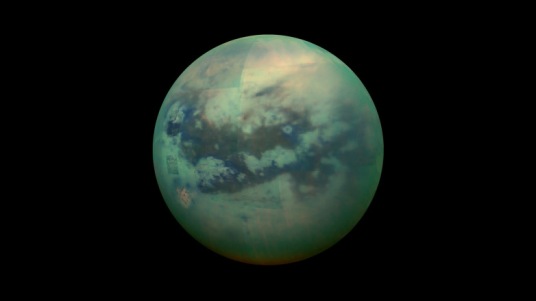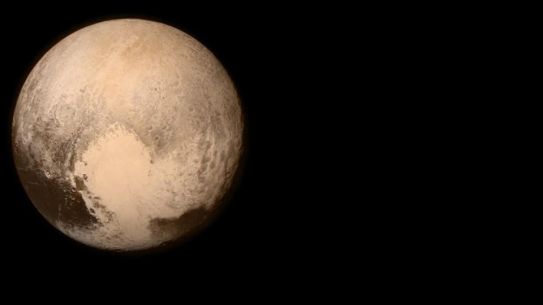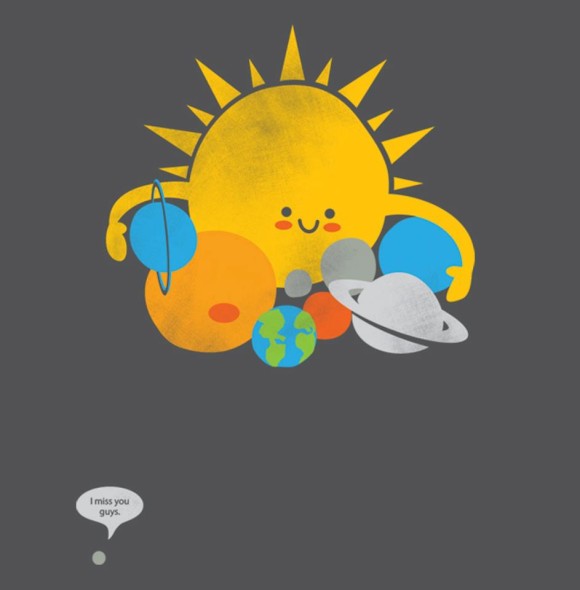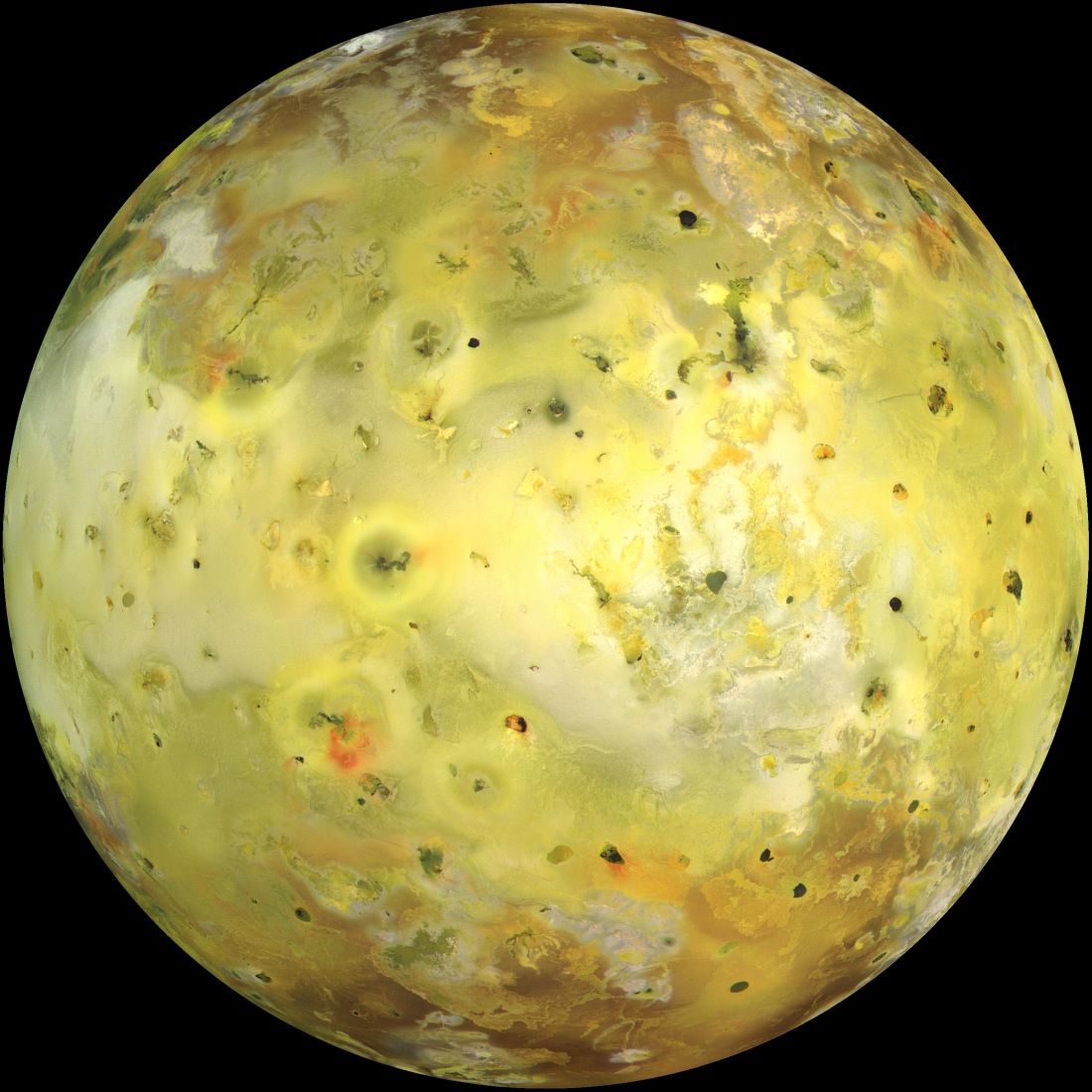
Titan is Saturn’s Largest moon (the second largest moon in the solar system), and was discovered in 1655. Titan is almost the size of the largest moon, which is Ganymede (Jupiter’s largest moon). However, despite their similar size and relatively similar distance from the Sun, Titan has characteristics that Ganymede does not.
Titan is the only moon in the Solar System to have clouds and a relatively dense atmosphere. It also has liquids flowing on the surface, similar to the geology on Earth. From the Cassini Mission, researchers have discovered rivers and lakes on Titan’s surface of ethane and methane. They have also discovered that Titan has evaporation, condensation, and rainfall. Titan’s surface seems relatively young because it is not heavily cratered, but scientists are unsure if this is because the surface is actually young, or because the geological processes have eroded older craters.
It is very interesting that while Earth and Titan have different distances from the sun, size, temperatures, life, and composition, they still have similar geological processes.
Do you think that it is possible that Titan formed inside the asteroid belt, possibly encountered some collision with another object, exited the inner solar system, and was caught by Jupiter’s orbit?







